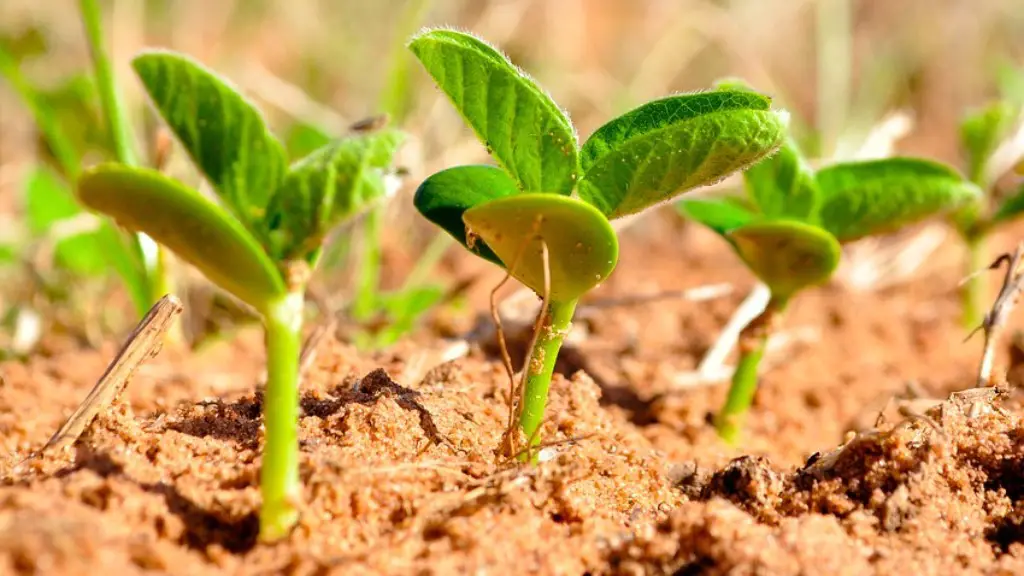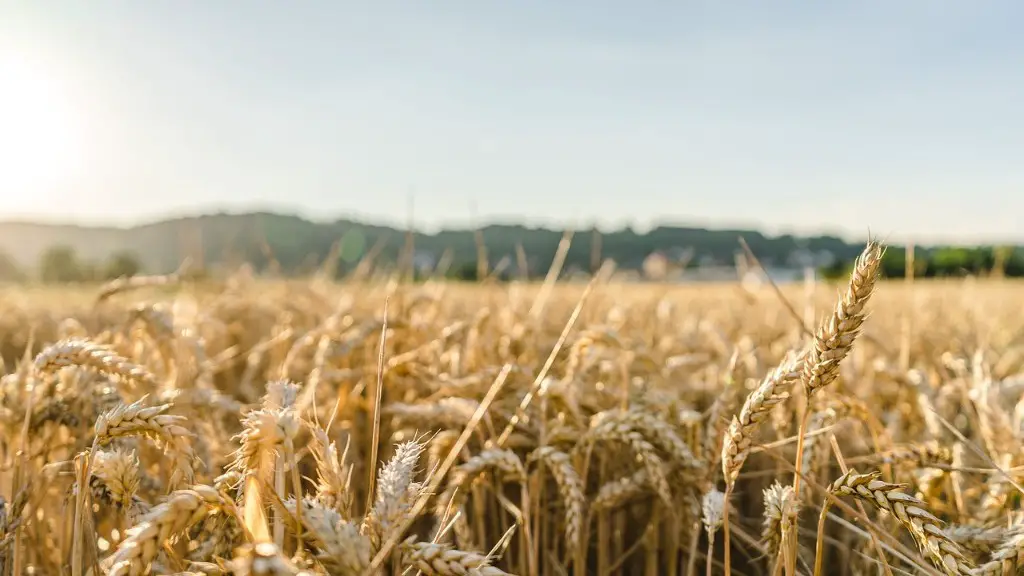Fertility in agriculture refers to the ability of a soil to produce abundant, nutritious crops over time. It is a complex and multi-faceted concept that affects crop production, managing soil health, and ensuring sustainable agricultural systems. Fertility starts with the quality of the soil in terms of texture, structure, and organic matter content, which in turn affects the availability of water and essential nutrients. Fertilizers can be used to supplement and/or supplement natural soil fertility. Sustainable agricultural systems monitor and adjust soil fertility over time to maintain crop productivity.
In order to determine the capacity of soil fertility, soil testing and analysis is used. This includes taking samples from several different soil depths at various points on the farm property, measuring the thickness of the soil, assessing the physical and chemical characteristics of the soil, and examining the amount of soil organic matter. The amount of organic matter in the soil is an indicator of soil fertility as it stores nutrients and improves soil composition, texture, and structure.
In addition to soil testing, other methods are used to measure and assess soil fertility such as crop assessment, when farmers monitor crop growth, vigor and yield and compare it to the current crop given. Cover crops, compost, and manure can also be added to increase the amount of organic matter in the soil, while chemical fertilizer is applied to add essential nutrients. Fertility management should take into account the interactions of soil, water, light, temperature, and fertility in order to optimize the potential of sustainable agricultural systems.
Soil fertility is also closely linked to soil erosion, as nutrient-deficient soil is vulnerable to physical, chemical and biological degradation. Weeds, pests, and diseases can easily proliferate in eroded soils, while soil degradation leads to a decreased capacity for water infiltration and an increased risk of soil flooding. Crop rotation, cover crops, terracing, and conservation tillage help protect the soil from erosion and maintain its fertility.
Finally, soil fertility also plays an important role in carbon sequestration. Carbon sequestration is the process by which carbon is stored in the soil, and it helps to mitigate the impacts of climate change by reducing atmospheric carbon. Fertile soil holds more soil organic matter and therefore sequesters more carbon, which results in improved air quality, water retention, reduced erosion, and healthier crops.
Nutrients Contribution to Soil Fertility
The key nutrients that contribute to soil fertility are nitrogen, phosphorus, and potassium. Nitrogen helps plants convert carbon dioxide into carbohydrates, which are needed for nitrogen (N) fixation. Phosphorus is necessary for root and flower development, as well as for fruit growth. Potassium helps plants to resist disease and pests and is crucial for plant growth and cell development.
Another important nutrient for soil fertility is calcium. Calcium helps to increase the structure, stability, and water retention of the soil. Magnesium helps to regulate the uptake of other nutrients and is essential for photosynthesis. Sulphur is necessary for chlorophyll production, while zinc and copper aid in maintaining healthy root systems.
Apart from these essential nutrients, other minerals and trace elements like iron, boron, manganese, and molybdenum play an important role in soil fertility. For example, iron deficiency can limit the growth of some plants, while trace elements such as molybdenum and boron are essential for nodule formation and nitrogen fixation.
Soil fertility is critical for successful crop production, and a balanced soil fertility management plan should take into account the different nutrients and their availability in the soil.
Improving Soil Organic Matter
Organic matter plays an important role in soil fertility, as it is linked to soil structure, water retention, and nutrient availability. Adding organic matter to the soil can improve its texture, soil structure and compaction, and its ability to hold water and nutrients. Organic matter helps to increase the microbial activity, which in turn helps to make nutrients more available to plants and increase water infiltration.
Cover crops, compost, and manure all have the ability to improve the organic matter in soil. Cover crops can be used to protect the soil from erosion and competition by weeds, while also adding organic matter and improving soil structure. Compost is a soil-builder, and the organic matter that it contains can nourish the soil, while manure can act as a soil conditioner, helping to improve the structure of the soil.
Rotating crops, mulching, and incorporating organic matter into soil are all methods of improving the organic matter content of the soil, which leads to increased soil fertility, increased water retention capacity and improved crop production. Furthermore, soil organic matter acts as a buffer, helping to prevent nitrogen and phosphorus from leaching from the soil.
Soil organic matter is essential for soil fertility, and increasing its content in the soil is of utmost importance for successful crop production.
The Role of Fertility in Sustainable Agriculture
Sustainable agriculture requires an approach to managing soil fertility that balances the need for crop productivity with the need for environmental protection. Such an approach includes soil testing and analysis, assessing organisms in the soil, adding fertilizers and organic matter, and optimizing soil management practices.
Soil testing is a critical tool that farmers use to measure, monitor, and adjust soil fertility while also preventing nutrient runoff and leaching, which can lead to environmental damage. Cover crops, mulching, crop rotation, and conservation tillage are all important tools for reducing runoff and soil erosion and maintaining soil health.
Organic matter is an essential component of soil fertility, and its presence in soil increases nutrient availability and water infiltration. Adding compost, cover crops, and manure are important ways of improving the organic content in soil, and also help create a better environment for soil organisms.
The application of fertilizers requires understanding of the balance between crop requirements and environmental impacts, and should take into account the possible losses of nutrients and their impact on the soil. Integrating the use of organic fertilizers, organic certification, and organic soil management standards can ensure sustainable soil fertility.
Preventing Soil Fertility Loss
Managing soil fertility involves balancing nutrient inputs and outputs in order to protect the environment and promote crop production. Nutrient losses due to erosion, leaching and runoff can have a detrimental impact on soil fertility, and can also lead to environmental problems such as water pollution.
In order to prevent soil fertility losses, sustainable agricultural systems need to be implemented that carefully monitor, control and adjust soil fertility over time. Practices such as crop rotation, cover cropping, terracing, and conservation tillage can help reduce nutrient runoff, erosion and soil compaction.
Integrating cover crops in agricultural systems is another important way of managing soil fertility. Cover crops act as a barrier to soil erosion, reduce nutrient leaching, improve soil structure, and add organic matter to the soil. Additionally, they can be used as a form of pest control, as well as providing food for pollinators and other beneficial insects.
Furthermore, incorporating organic amendments into soil and fertilizing with organic fertilizers is also important for preventing soil fertility losses. Organic fertilizers add organic matter to the soil, increase microbial activity, and enhance crop production.
The Role of Soil Productivity Management
Soil productivity management is an important component of sustainable agriculture, and involves monitoring and adjusting the soil fertility over time to ensure optimal crop yields and soil health. Soil sampling, analysis and assessment are key components of soil productivity management and can help farmers to assess the fertility of their soils and ensure that the soil is meeting the needs of their crops.
Excess nutrient runoff and leaching can lead to water pollution, and proper soil fertility management is paramount to prevent this from happening. Strategies such as using organic fertilizers, practicing crop rotation, incorporating cover crops, and using terraces help to reduce nutrient runoff and erosion, while improving soil structure and fertility.
Additionally, integrated pest management systems can help farmers to assess and manage pests, weeds and diseases, while maintaining soil fertility and increasing the overall productivity of their fields.
Soil productivity management is an essential component of sustainable agriculture, as it ensures that soil fertility is maintained over time in order to maximize crop yields while protecting the environment.





